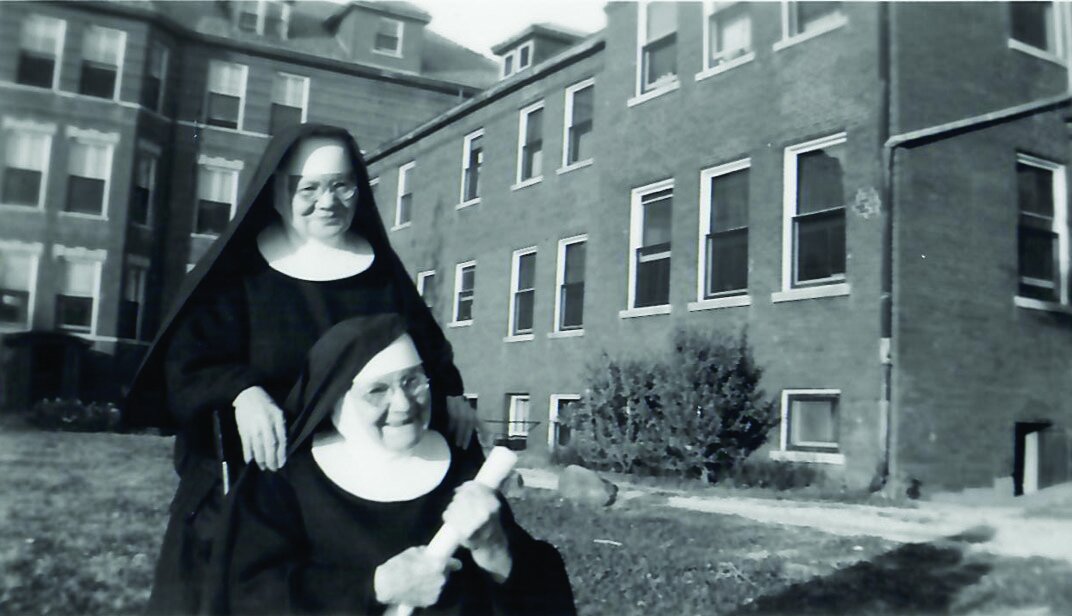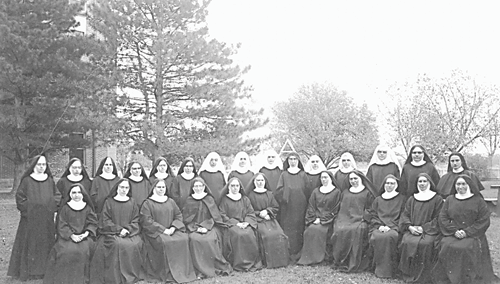
Our History
St. Benedict
St. Benedict founded the Order of St. Benedict, a monastic community for men, and his sister, Scholastica, formed the women's monastic counterpart. Much of what we know about St. Benedict can be found in Pope Gregory the Great's account of him.
St. Benedict was near 20 years old when he left Rome for the peace and solitude of a tiny cave high in the mountains near Subiaco, Italy. There, he felt he could seek God. His hermitage was so remote that food had to be lowered to him by friendly shepherds from a plateau jutting out over his cave.
Gregory says that Benedict was discovered by a group of monks who prevailed upon him to become their spiritual leader. His regime soon became too much for the fair-weather monks, so they plotted to poison him. Gregory recounts the tale of Benedict's rescue: when he blessed the pitcher of poisoned wine, it broke into many pieces. Thereafter he left the undisciplined monks.
Benedict eventually moved to Monte Cassino, where he built a monastery and wrote the Rule.
Europe to America
Benedictine monasteries spread across Europe over the following centuries, eventually reaching the shores of the New World. Our own monastery — St. Mary Monastery in Rock Island, Illinois — came from Eichstatt, Bavaria, by way of a young nun who answered a call for help from America.
Benedicta Riepp, along with two other Benedictine nuns, arrived in America in 1852 to educate immigrant children in St. Mary’s, Pennsylvania. In a traditional Benedictine cloister, the Sisters followed strict schedules and kept separate quarters from their students. Their new mission would require more flexibility. Benedicta and her fellow Sisters set the mold for the monastic American Sisters who followed in their footsteps.
Pennsylvania to Chicago to Nauvoo
Benedictine communities began to crop up all over the United States, with small groups of Sisters following the settlers from Pennsylvania to Ohio, Indiana, the Dakotas and beyond. Our own community moved first to Chicago, where they established St. Scholastica's Convent. In 1874, they moved downriver to Nauvoo, Illinois, after Fr. Reinbolt asked St. Scholastica to send Sisters to establish a school for girls.
Sr. Ottilia Hoeveler made the trip by train and steamship with four other Sisters, founding the school that would become St. Mary's Academy. By the turn of the century, the Sisters of St. Benedict had built a thriving academy for girls and a grade school for boys. They also had acquired several buildings to house classrooms and dorms.
St. Mary's Academy continued to thrive throughout most of the 20th century, providing progressive college preparatory education to young women who went on to open their own businesses, practice law and medicine, create art, and provide service to God's creation. The Sisters continued to expand their education ministry at the same time, helping open and staff schools throughout Illinois and into Indiana.
Nauvoo to Rock Island
When the popularity of boarding schools began to decline across the country in the 1990s, the Sisters began to question how they best could continue to serve God and God's people. After much prayerful discernment, they closed their school and sold everything to provide sufficient funds to build a new monastery and retreat center. They chose to build atop a hill one hundred miles upriver, in Rock Island, Illinois, where they could preserve acres of woods for wildlife and dig a lake for the environmentally protective practice of geothermal heating and cooling.
The new St. Mary Monastery and Benet House Retreat Center were built according to the Rule of Benedict, incorporating such values as community, hospitality and good stewardship. They foster community in their layout, provide ample room for guests and are built to last. From this new location, the Sisters continue such ministries as retreats, prayer, education, parish work and outreach to the poor.




